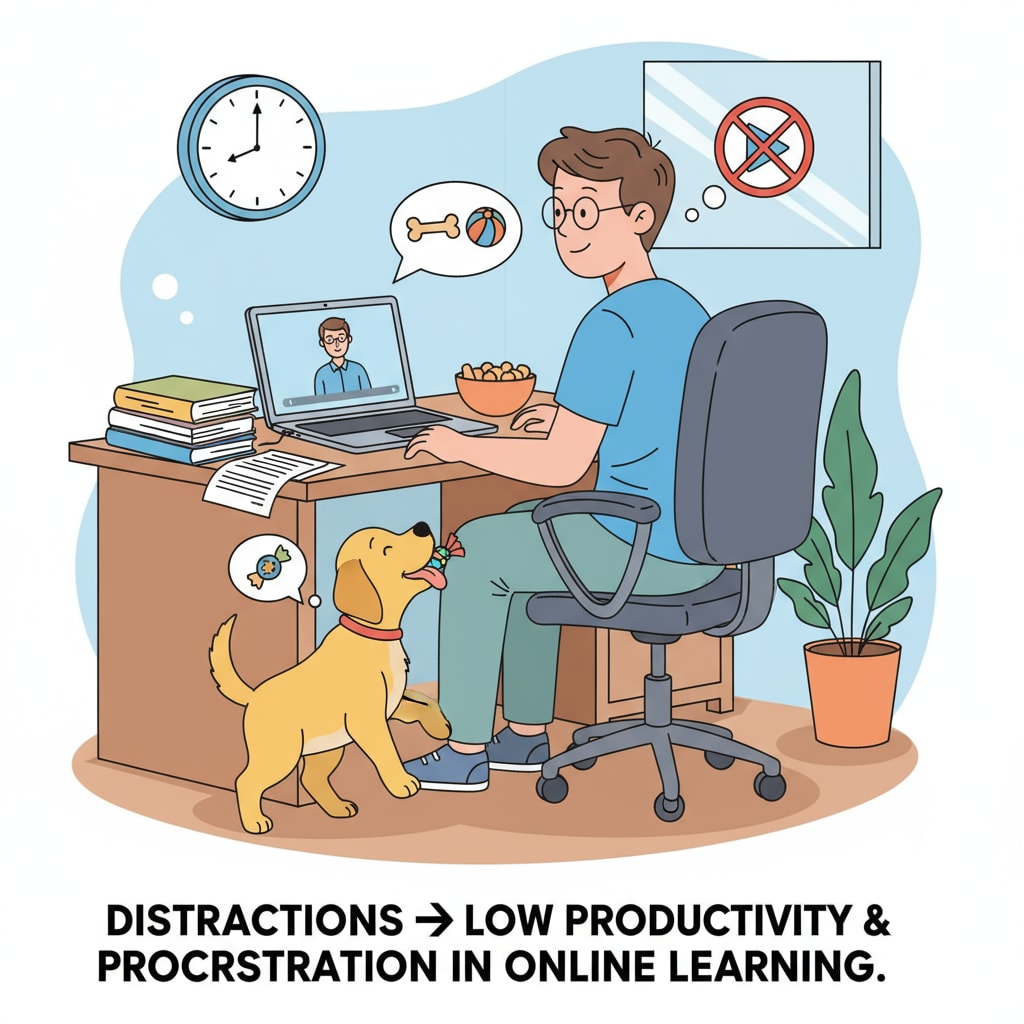Online learning, productivity, procrastination, and mental health are intertwined aspects that students, especially those in K12, face in the digital age. With the flexibility it offers, online learning has become a popular choice. However, it also presents challenges such as maintaining focus and staying motivated.

Understanding the Challenges of Online Learning
One of the primary issues in online learning is the lack of face-to-face interaction. Without the physical presence of teachers and classmates, students may feel isolated. This can lead to decreased motivation and procrastination. According to Psychology Today, social connection is crucial for maintaining mental well-being, and its absence in online learning can take a toll. In addition, the home environment is filled with distractions, from family members to household chores. These distractions can disrupt the learning process and reduce productivity.

Overcoming Procrastination in Online Learning
Procrastination is a common problem in online learning. To combat it, students need to set clear goals. By breaking down large tasks into smaller, manageable ones, it becomes easier to stay on track. For example, instead of trying to complete an entire assignment in one go, divide it into sections and set deadlines for each part. Another effective strategy is to create a schedule. Having a routine helps train the mind to focus during specific learning hours. As Verywell Mind suggests, establishing a regular rhythm can enhance productivity and reduce the urge to procrastinate.
Moreover, eliminating distractions is essential. This could mean turning off notifications on your phone, using website blockers for social media, or finding a quiet study space. By reducing these distractions, students can create an environment conducive to learning.
Building Self-Discipline for Productivity
Self-discipline is the key to productivity in online learning. Start by rewarding yourself for achieving small goals. This positive reinforcement can boost motivation. For instance, after completing a difficult assignment, treat yourself to something you enjoy, like watching a short video or having a snack. Additionally, holding yourself accountable is important. Share your goals with a friend or family member who can check in on your progress. This external support can help keep you on track.
Another aspect of self-discipline is time management. Use tools like calendars or to-do lists to organize your study time. By allocating specific time slots for different tasks, you can ensure that you cover all your learning requirements without feeling overwhelmed.
Maintaining Mental Health in Online Learning
Mental health should not be overlooked in the context of online learning. Taking regular breaks is crucial. Just as in a traditional classroom, your brain needs time to rest and recharge. Short breaks can improve focus and prevent burnout. Also, engage in activities that you enjoy outside of learning, such as exercise, reading, or painting. These activities can reduce stress and promote overall well-being.
Furthermore, stay connected with your peers and teachers. Participate in online discussions, group projects, and virtual study sessions. Building relationships in the virtual environment can alleviate feelings of isolation and contribute to a positive learning experience.
In conclusion, online learning offers great opportunities for students, but it also comes with challenges related to productivity, procrastination, and mental health. By understanding these challenges and implementing strategies to build self-discipline, students can thrive in the virtual classroom. Remember, a balanced approach that addresses both academic requirements and mental well-being is the key to success in online learning.
Readability guidance: The article uses short paragraphs and lists to summarize key points. Each H2 section provides practical strategies. The use of passive语态 is minimized, and transition words are used throughout to enhance flow.


